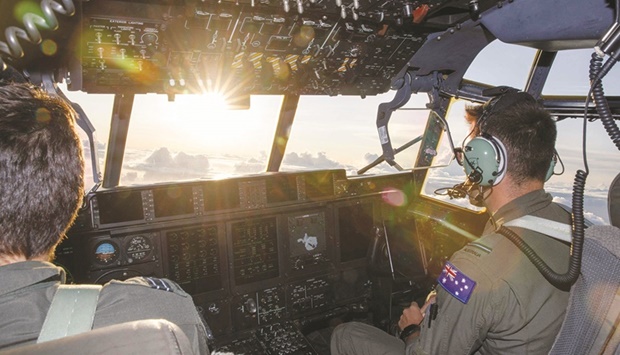Tonga finished removing a thick coat of ash from an international runway yesterday after days of painstaking effort, clearing the way for desperately needed emergency aid to arrive in the isolated and disaster-stricken nation. UN crisis co-ordinator Jonathan Veitch told AFP the runway on the Pacific kingdom’s main island, once buried in five to 10cm of volcanic ash, was again operational.
It is “cleared but not in use yet”, he said, adding that Tonga could receive much-stalled flights from Australia and New Zealand from Thursday.
Three people were killed when the Hunga Tonga-Hunga Ha’apai volcano exploded on Saturday, triggering tsunami waves that ripped down homes and caused widespread flooding. The overwhelmed Tongan government has called the dual eruption-tsunami “an unprecedented disaster” and reported that waves as high as 15m destroyed almost every home on some outlying islands.
Virtually the entire population of 100,000 people has been affected, and initial assessments indicate an urgent need for drinking water. When the underwater caldera exploded, it fired debris 30km into the air and deposited ash and acid rain across the kingdom of 170 islands – poisoning water supplies. “Water supplies across Tonga have been severely impacted by ashfall and saltwater from the tsunami,” said Katie Greenwood of the International Federation of Red Cross and Red Crescent Societies. She said there was a “mounting risk of diseases such as cholera and diarrhoea”.
For days, Australia and New Zealand have had military transport C-130 aircraft laden with supplies ready to go, but their departure has been repeatedly delayed. Local authorities were only able to clear about 100-200m of the runway per day. Ash particles pose a threat to modern jet aircraft, including by melting and accumulating in the engines.
Both countries have also sent help by sea, with Royal New Zealand Navy ships HMNZS Wellington and HMNZS Aotearoa expected to arrive in Tongan waters tomorrow. They are carrying water supplies and a 70,000-litre a day desalination plant, as well as navy hydrographic and dive personnel to survey shipping channels. Australia’s helicopter landing vessel HMAS Adelaide is expected to soon set sail on a voyage of five days.
China also said it would send emergency supplies such as drinking water, food and disaster relief equipment when flights allowed. There are fears for the island’s food supplies, with a tearful speaker of the national assembly Fatafehi Fakafanua saying “all agriculture is ruined”. “It’s very sad to hear, so on top of the water that we need in Tonga, it seems that we’ll be facing a food shortage,” he told the Pacific Media Network. The eruption was one of the most potent in decades, releasing a pressure wave that traversed the planet, travelling at supersonic speeds of about 1,230km per hour, New Zealand’s National Institute of Water and Atmospheric Research said. It broke a vital undersea communications cable that links Tonga with the rest of the world. Partial communications were restored on Wednesday with mobile phone network provider Digicel announcing “international calls service is back up”.
There had been little news from the islands since Saturday, except for a handful of messages delivered through satellite phones, with a complete restoration of services weeks away. “US cable company SubCom advises it will take at least four weeks for Tonga’s cable connection to be repaired,” New Zealand’s foreign ministry said yesterday. The company said the cable appears to be severed in two places – one is 37km offshore and the other is a domestic cable close to the volcano, making repairs difficult. A repair ship is en route from neighbouring Papua New Guinea.

This handout photo released by the Royal Australian Air Force and the Australian Defence Force shows No. 37 Squadron pilots Flight Lieutenant Jack Woodrow (left) and Flying Officer John Newell flying along the coastline of Tonga to assess damage following the eruption of the Hunga Tonga-Hunga Haa’pai underwater volcano on January 15.
